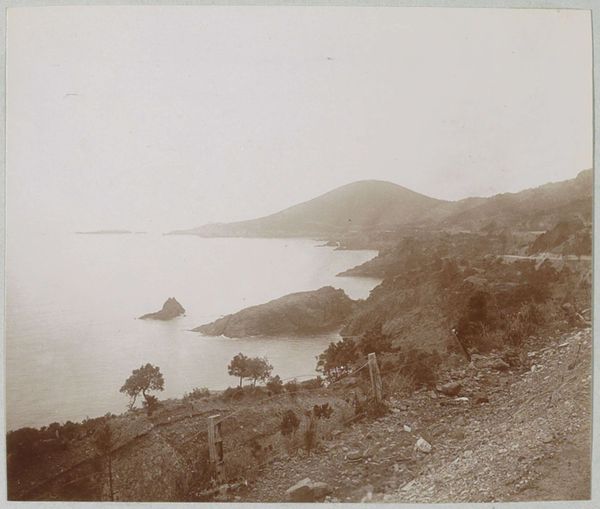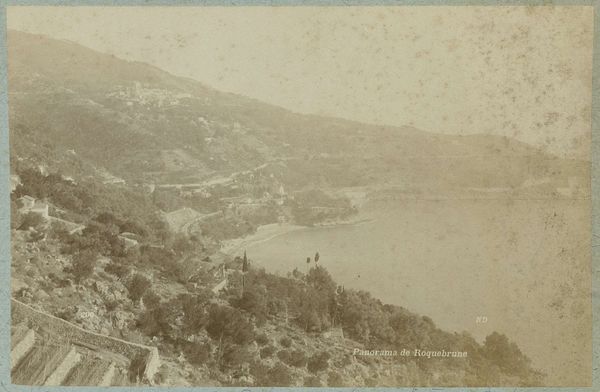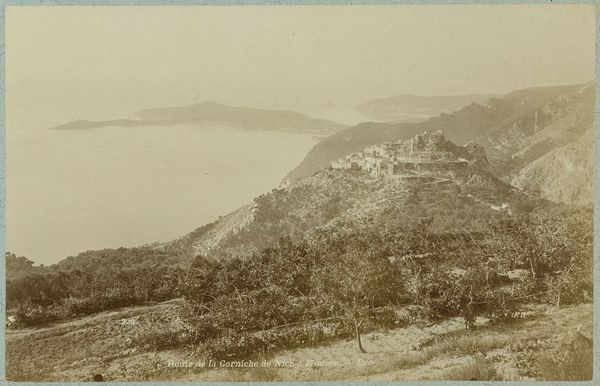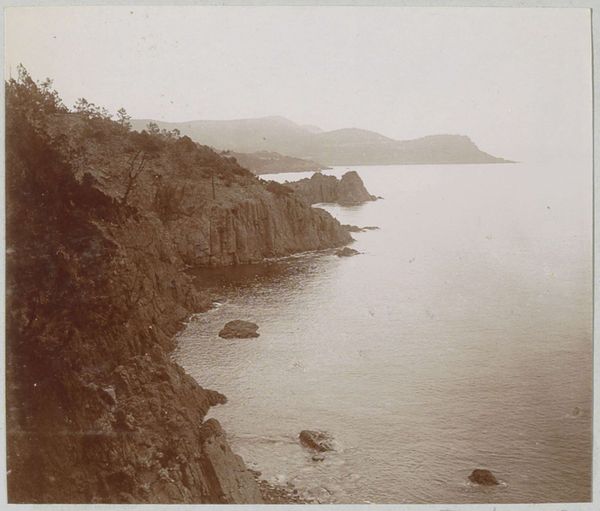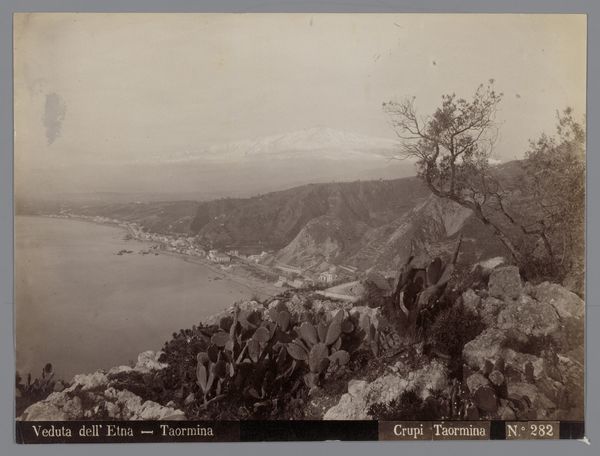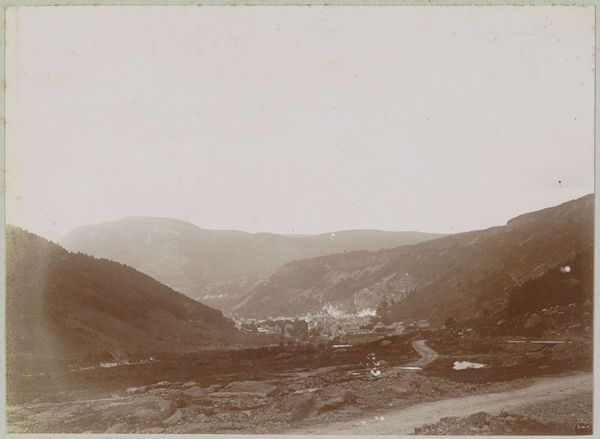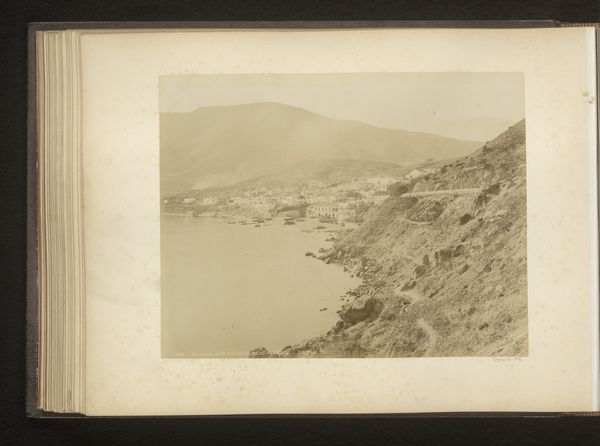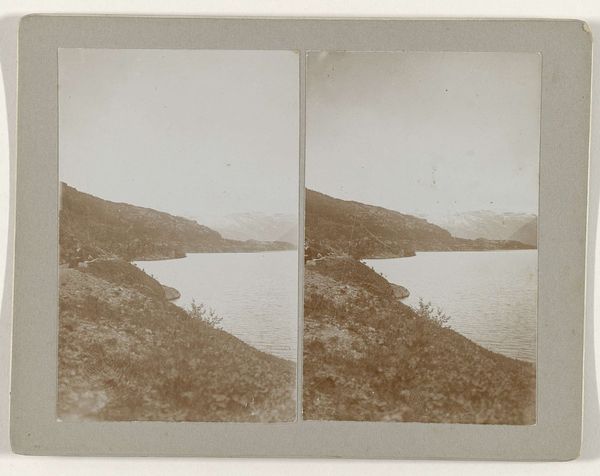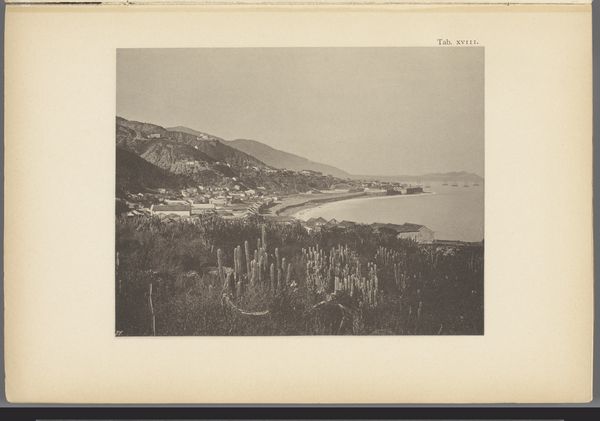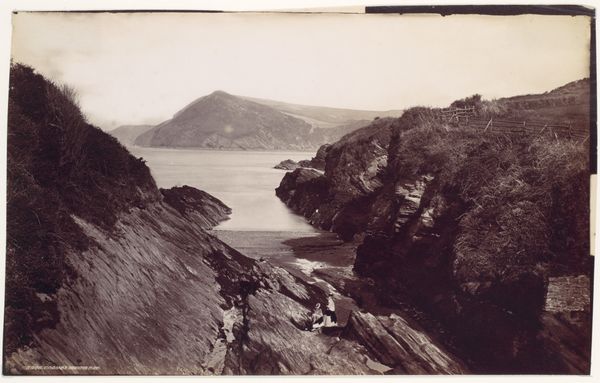
photography, albumen-print
#
landscape
#
photography
#
cityscape
#
albumen-print
#
realism
Dimensions: height 120 mm, width 188 mm, height 315 mm, width 421 mm
Copyright: Rijks Museum: Open Domain
Curator: Welcome. The work before us is an albumen print titled "Gezicht op Roquebrune, Menton en Cap Martin", attributed to Neurdein Frères, and created sometime between 1863 and 1891. Editor: It has an air of detachment about it. Looking down from that great height, the land and sea become almost abstract shapes in subtle tones of sepia. Curator: Note how the albumen process lends the image its particular tonal range and surface texture. The composition is really structured around the coastline, carving out that subtle diagonal. Editor: I'm drawn to consider who gets to have this perspective, quite literally. Early tourism in the French Riviera was predominantly accessible only to the elite. Images like this would have both fed and reflected a very specific kind of gaze onto the area. The viewpoint privileges the colonizing observer, right? Curator: The technical process involved—the precise chemicals and timing required to create such detail—mirrors a desire to document, to claim objective truth. See how the eye travels? Editor: I do, but also wonder who profits, whose history becomes prioritized. These scenes naturalize particular socioeconomic formations. There's the beauty, yes, but also its entanglement with a story of exploitation. Even landscape photography carries those codes. Curator: Yet the very restraint in the composition avoids easy sentimentality. By showing so much, they’re implicitly withholding. I find the ambiguity far more suggestive than any overtly expressive piece. The line carries across to a silent vanishing. Editor: Still, those codes exist. They solidify ways of thinking about access and representation. We need to keep asking who's absent, what stories remain unseen in photographs that construct this kind of landscape. Curator: I appreciate that alternative vision so close to what it is about photography, its relation to capturing what remains as index, in time. Editor: And it serves as a mirror to reflect our presence and privileges, and question what that really means.
Comments
No comments
Be the first to comment and join the conversation on the ultimate creative platform.
